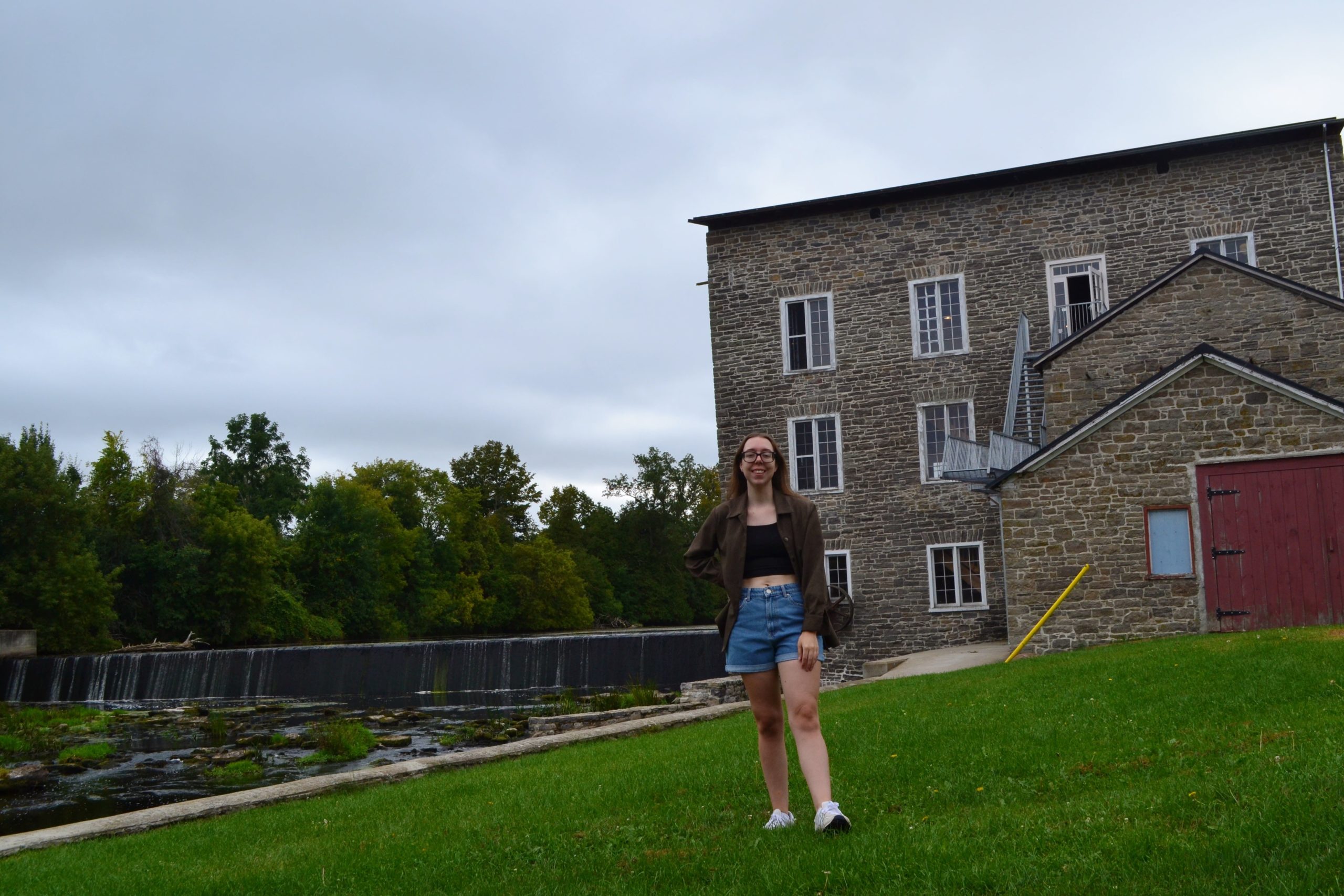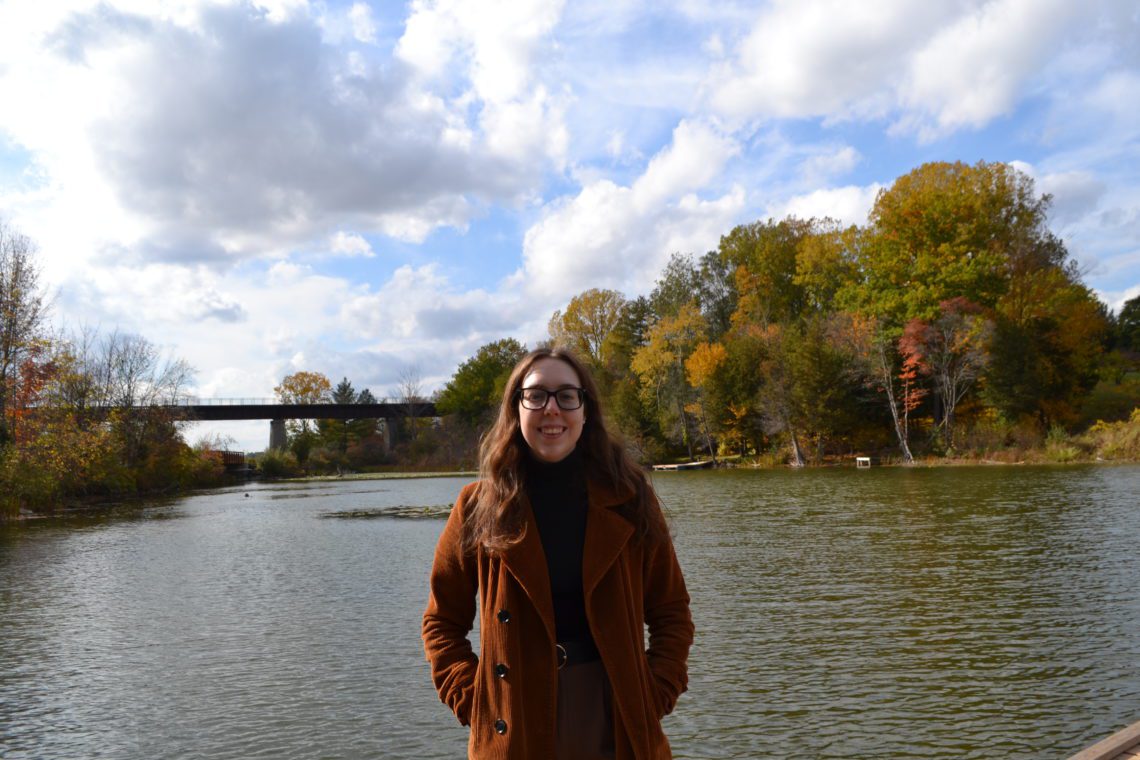
Waterford, Ontario
Norfolk County, est. 4,208 residents
Waterford, Ontario, started as a milling centre before transforming into the natural beauty that it is today. The Missasaugas and the Six Nations of the Grand River were the original groups of Indigenous Peoples in the area before Paul Averill eventually settled there in 1794. Originally called Averill’s or Avery’s Mills, the town grew around Averill’s grist and saw mills located on Nanticoke Creek.
After a few different name changes, Job Lodor purchased the mill in 1816 and renamed the town Lodorsville. This didn’t stick long as the village eventually became known as Waterford in 1826 when the area opened its first post office. Although it’s a bit unclear as to how the name Waterford came about, many believe the town is named after a Waterford in either Ireland or the United States.
The Importance of the Railway
A number of railway lines passed through Waterford and were vital in keeping the area as a manufacturing and agricultural centre. The Erie and Niagara Extension Railway was founded on February 28, 1868, as a way of transportation for those looking to travel across southwestern Ontario. The rail line fully opened in 1873 under the name the Canada Southern Railway (CSR).
This new railway provided the shortest, most efficient transportation route between Michigan and New York State and gave farmers an easier time transporting their goods between towns. The Canada Southern Railway was highly successful in Waterford, with many noting that it “had the fastest schedule, and runs its trains faster than any on the continent.” Passing through Waterford, the CSR contributed to the area’s economic prosperity until the decline of rail in the mid-twentieth century.
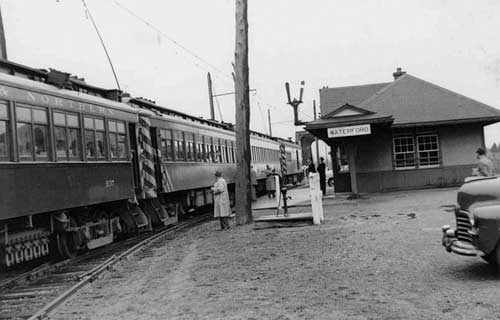
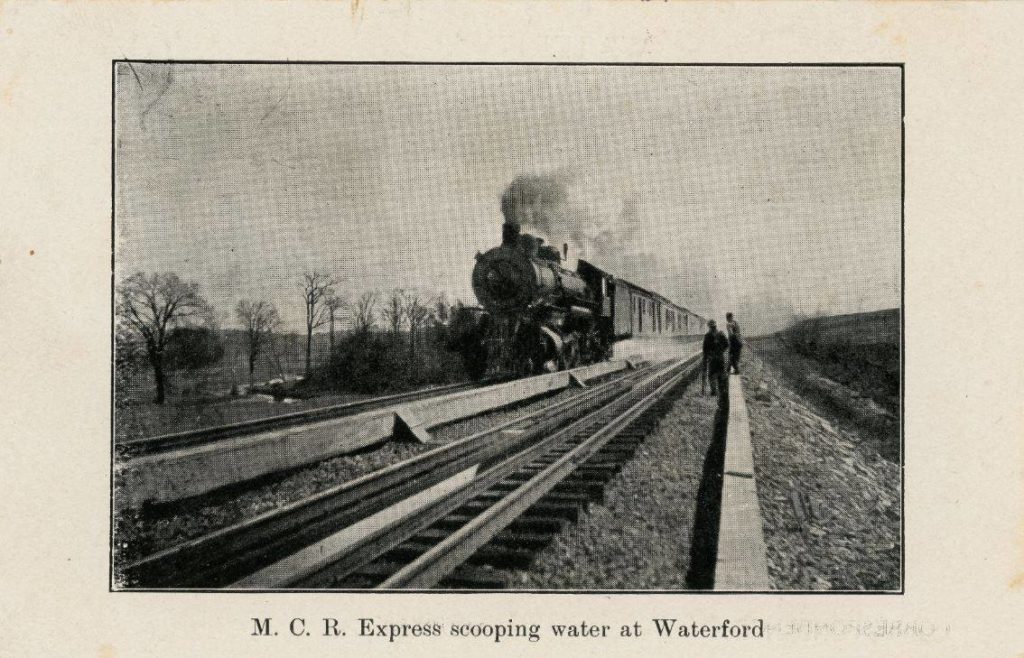
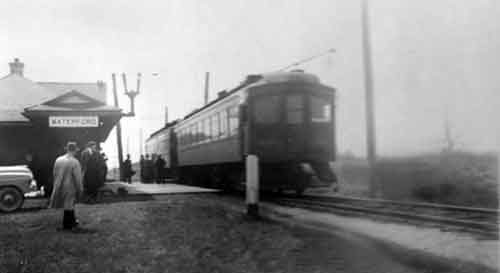
By the 1890s, the Brantford, Waterloo and Lake Erie Railroad brought even more convenient transportation to Waterford. In 1893, it became the TH&B (Toronto, Hamilton and Buffalo) line, which was a partnership between Michigan Central Railroad and the Canadian Pacific Railway (CPR). The passenger train service for this line between Hamilton and Waterford lasted until 1954.
Another successful railroad running through Waterford was the Lake Erie and Northern (LE&N) electric rail line that came to town in 1916 as a subsidiary of the CPR. In 1931, it was consolidated with the Grand River Railway under a single CPR subsidiary, the Canadian Pacific Electric Lines (CPEL). Passenger service was discontinued in 1955 but electric freight operations continued until 1961.
Waterford’s Agricultural Past
Despite starting as a milling centre, many began moving to Waterford for its promising agricultural industry. Located in an agricultural and lumbering region with access to rail lines, Waterford became Norfolk County’s northern market centre. Waterford, like much of the county, was and still is an area known for its rich farmland. Planting tobacco arrived in the region around the mid-20th century, with the sandy loam soil being the perfect complement to the crop. This industry contributed to the area’s prosperity and thrived during this time.
When farmers suffered from the decline of both the rail and tobacco industries, they learned to pivot and look for new crops to earn their living. Today, natural health and organic products like ginseng, lavender and wine grapes have popped up on a number of farms all along the region. Other classic crops like corn, tomatoes and cabbage are also still grown in the area.
Waterford Today
Originally called the Spruce Row Museum, the Waterford Heritage and Agricultural Museum has been operating as a municipal museum in Norfolk County since 2001. It’s home to a collection of local history about its farming past that remains relevant even today. Through its collection, research, exhibitions, and programming, the museum offers a place for visitors to learn more about what was once a booming industry in the area.
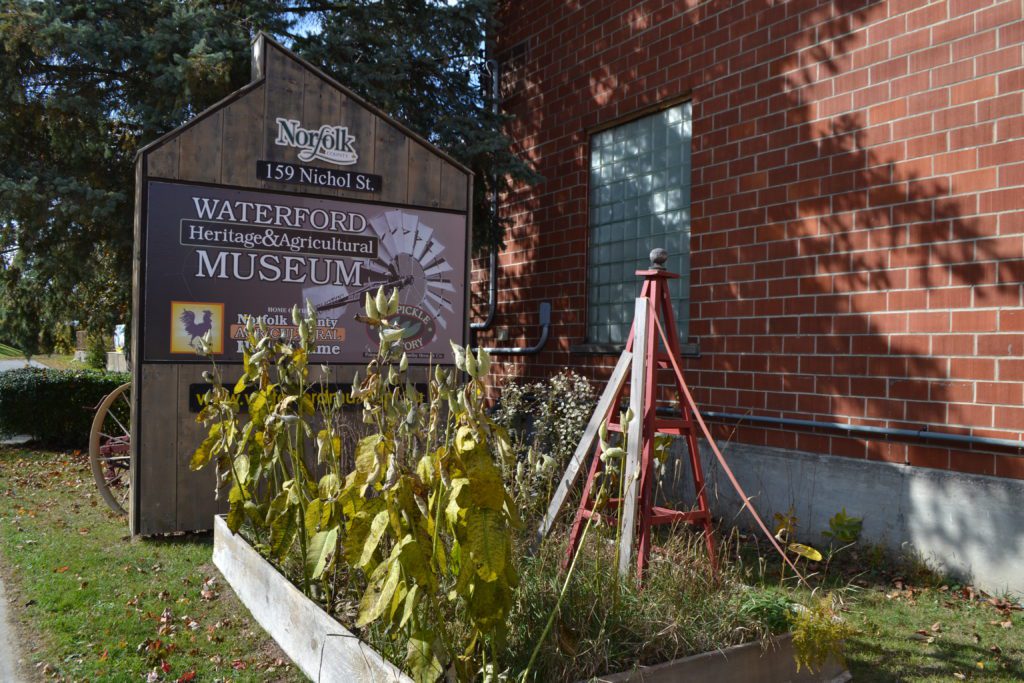
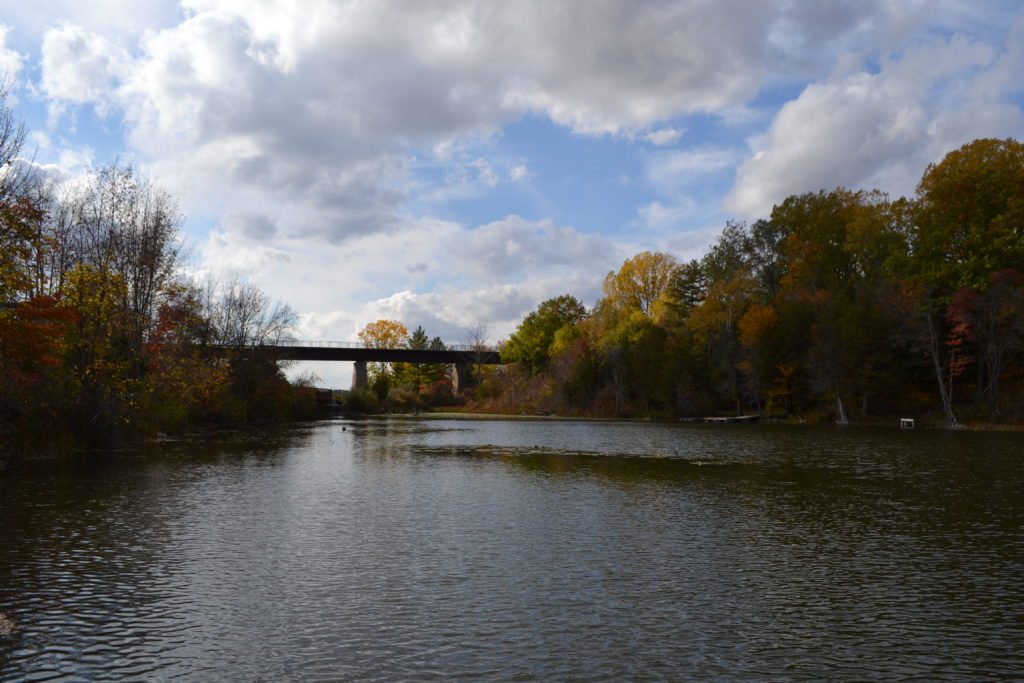
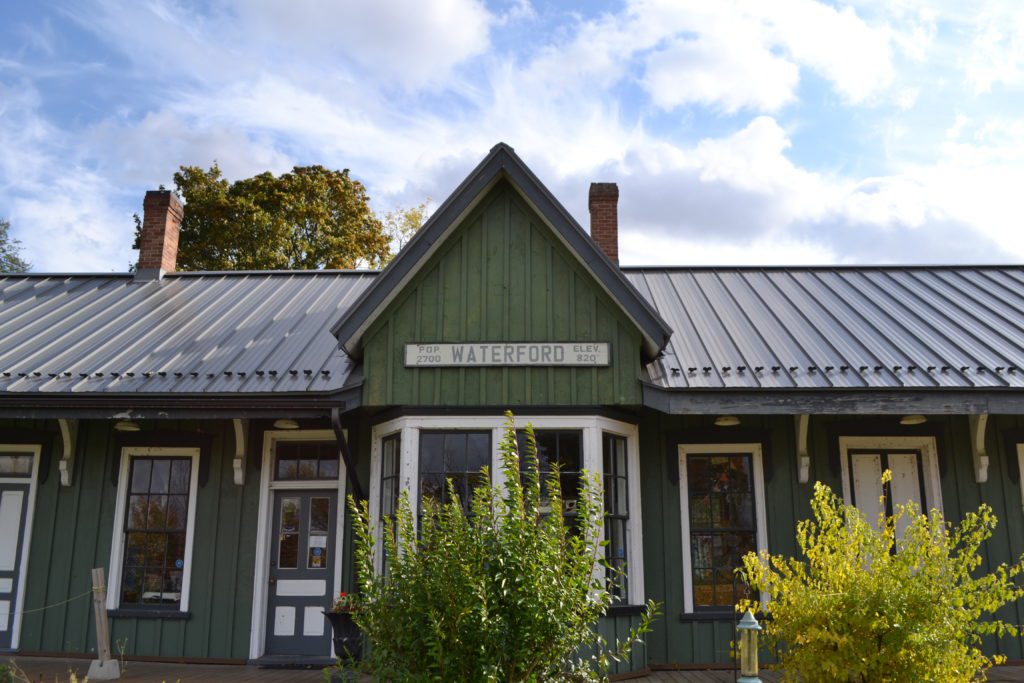
Waterford has many antique shops around the town, including the Waterford Antique Market. This business opened in 1999 and is a pleasant place to spend an afternoon. The market offers a huge selection of antiques across two floors with items ranging from records to clothing to furniture and everything in between. With something for everyone, you’re likely to find a treasure that catches your eye.
Shadow Lake Trail is part of the Waterford Heritage Trail network. This 19-kilometre trail was once a rail line that is now part of the Trans Canada Trail. The path is surrounded by nature and offers stunning views of Waterford’s incredible network of ponds.
Ritzy’s Bakery and Deli is a must-try when in the area. The small, family-run bakery opened in 2011 and has been a hotspot in the heart of Waterford ever since. Ritzy’s sells a number of delicious treats including apple fritters, cupcakes, savoury pastries, soups and more.
Waterford is a cozy small town known for its picturesque views of the area’s pond system. The village has done a remarkable job hosting a number of noteworthy events, including Pumpkinfest in the fall, that bring the town and the community closer together.
A big thank you to Angela from the Waterford Heritage and Agricultural Museum for providing me with more information about the area.



